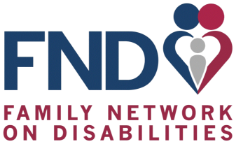INformation Hub
Show Communities the Data: Best Practices for Communicating Data to Parents and the Public
Show Communities the Data: Best Practices for Communicating Data to Parents and the Public
DQC has been reviewing state report cards annually since 2016. In that time, we’ve seen many examples of how states communicate data to parents and the public. This three-part blog series, leading up to the publication of DQC’s Show Me the Data 2021 report later this month, expands on some of the best practices our research team has identified over the years.
Parents and the public want information on how schools are serving their students. The most effective report cards go the extra mile to help parents find the information that answers their questions and provide context for how those numbers relate to their student’s unique needs and goals. State leaders should consider the following best practices to make their report cards easily understandable and useful to parent and community audiences:
- Point them in the right direction. Parents have questions about their student’s teachers and schools, but they may not know where to look for answers. Integrating guiding questions into report cards is an effective way for states to direct parents to the data that will address their specific needs. For example, Minnesota’s report card uses questions as section titles; parents can visit “Are students mastering standards?” for results from statewide assessments, or “How many students go to college?” for postsecondary enrollment rates. This strategy saves parents from having to click around the report card to find one piece of data, and ensures that they can find the answers to their most pressing questions.
- Help parents make sense of data. The best report cards are the ones that help users understand what that data means for actual students and families. By adding narrative explanations alongside data, state leaders ensure that parents interpret report card data correctly and see how that information connects to their own students. Idaho’s report card, for instance, includes a paragraph in each section that defines the data on that page and explains why it matters for student success. Delaware’s report card helps users interpret data by including hover-over boxes on graphs with data points written out in sentences (e.g. “In the 2018 school year, 9,520 students (91.11%) were on-track in the ninth grade”). The report card defines key terms in clear text on the same page (e.g. “On-track in the ninth grade measures the percentage of ninth graders who have earned four or more credits core content areas required to graduate”). Strategies like these, along with high-quality translations (see more in our next blog post), go a long way toward ensuring that parents and communities can access and use report card data.
- Use graphs and visualizations to add context. Graphs and other data visualizations, such as trends over time or points of comparison, provide additional context for data that makes it more meaningful. Illinois’ report card effectively uses graphs to present financial data; users can view school spending data alongside data from other schools in their district. By drawing on familiar reference points, these visuals help parents understand the real world significance of data points that would otherwise seem wonky. (A word of caution to state leaders: use visuals sparingly! Graphs are only effective if they add to users’ understanding of the data. Including visuals for their own sake can make report cards seem crowded or confusing.)
- Make it possible to dig deeper. States must report a wide range of data points on their report card, but not all parents want or need that level of detail. State leaders can make it easier for parents to find data that is relevant to them by creating parent portals or landing pages designed for parent users with topline data on schools, like academic performance, school ratings, and teacher information. However, users must be able to easily navigate from the parent portal to find more detailed data, should they want it. Massachusetts’ report card, for example, initially displays a parent-facing page with key information organized by guiding question—and each section includes a link to a dedicated data website. This structure ensures that report cards meet different users’ needs, and that parents can quickly and easily find the information they’re looking for.
Over the past five years, state leaders have made strides in using their report cards to meet accountability and transparency goals. Now they need to take the next step in using report cards as a tool to communicate with parents and the public. This work means prioritizing aspects like design and user experience, which make a huge difference in how quickly and reasonably parents are able to find answers to their questions. By thinking intentionally about how they communicate report card data, state leaders can ensure that parents, families, and other members of the public have the information they need to support their student’s success.
SOURCE ARTICLE: Data Quality Campaign
Give us a call at (727) 523-1130 or (800) 825-5736 or request a callback by clicking below.
311 South Missouri Ave, Clearwater, FL 33756
(727) 523-1130
(800) 825-5736

